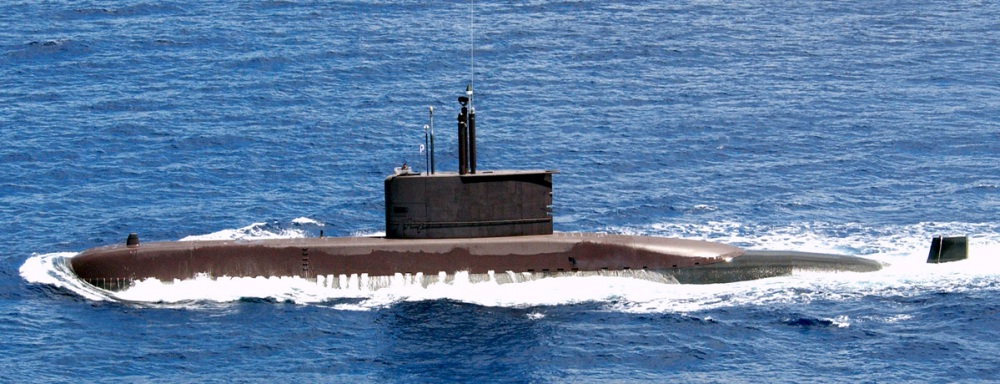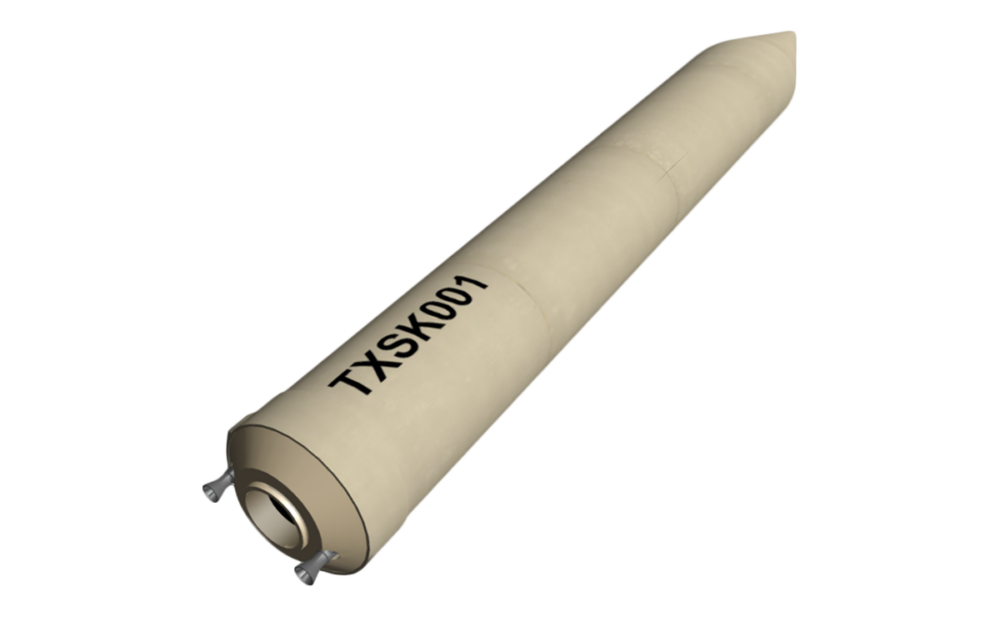
James Clay Moltz
Deputy Director, The James Martin Center for Nonproliferation Studies
The George W. Bush administration entered office with a space policy radically different from that of its predecessor. Leading members of the incoming Bush team—motivated by the findings of the Rumsfeld Commission reports on missile proliferation (July 1998) and the U.S. management of space activities (January 2001)—wanted the United States to use space much more aggressively both to combat rogue state missile proliferation and to reduce perceived U.S. space vulnerabilities. The remedies suggested by these reports were active missile defenses (some based in space) and new forms of satellite defense (including anti-satellite weapons).
At the international level, these policies led the administration to withdraw from the 1972 Anti-Ballistic Missile Treaty in June 2002 and to continue to block efforts to negotiate a new international treaty to ban space weapons at the Conference on Disarmament in Geneva.
After more than three years in office, what have the results of the president's ambitious plans been? This essay makes the case that the administration's space vision has not yet been accomplished, due largely to technical limitations. At the same time, recent budgets show that the U.S. Congress is still ambivalent about space weaponization, as key programs have faced significant cuts despite the Republican Congressional majority. Still, the trend toward weaponization is undeniable (and, indeed, is promoted by the administration), meaning that a second Bush term would bring actual space weapons to fruition. Indeed, recent plans indicate that some weaponization in the area of space-based anti-satellite (ASAT) defenses could take place as early as 2005.
This essay first reviews the current status of the administration's space weapons plans, particularly as they relate to missile defenses. It then examines the factors that have affected their development and will likely affect future policies: the nature of the threat (compared to other U.S. security concerns), the actual effectiveness of the weapons (which are still far from the test phase), and international reactions. China's gradual emergence as a major space power and the U.S. budget deficit may also have an effect on U.S. space policies. Thus, the essay concludes with a discussion of alternative scenarios that might take place in the next four years depending on the 2004 election, funding, and developments at the international level.
Despite initial plans of moving quickly to a "robust" national missile defense, the Bush administration is actually settling during its first term for a thin layer of ground-based missile interceptors in Alaska and California. This will be a system that has not been tested in anything close to an operational mode but will be deployed under the rationale that the military will "learn as it goes" and gradually upgrade the system. Currently, the interceptor has serious limitations in terms of speed and range, meaning that it will eventually have to be replaced. In addition, the system will be operating without the benefit of the planned X-band radar or the SBIRS (Space-Based Infra-Red System)-Low tracking network in low-Earth orbit, since neither program has yet come to fruition. Thus, the system will be very limited in its ability to identify, track, and target incoming missiles; it will rely on a few ship-borne radars and the aging Cobra Dana radar on Shemya Island, Alaska. By January 2005, however, the United States plans to have up to six interceptors in silos in Alaska and another four in California.[1] These interceptors will be aimed at mid-course interception of incoming missiles in space at altitudes of some 150 miles above the Earth's surface, lower than would be needed to reach true inter-continental ballistic missiles (due to limits of the only U.S. interceptor currently available).
Despite these missile defense plans and the aggressive rhetoric of the U.S. military and the administration about threats to space assets, the current achievements of the space weapons program are reminiscent of the early years of the Strategic Defense Initiative (SDI). Significant increases in research funding have not yet led to significant gains in effectiveness or progress toward deployable weapons. Indeed, due to repeated failures, space weapons budgets have recently begun to be scaled back for several concrete reasons: concerns over costs, the recommendations of the president's Defense Science Board to focus on nearer-term missile defense technologies (such as the ground-based interceptor), and uneasiness in the U.S. Congress about weaponizing space.
Programs that have suffered from Congressional cuts include the SBIRs-Low program, which was deemed over-budget and technologically immature. This program was reconfigured into the Space Tracking and Surveillance System (STSS) in 2002 and is still in the early research stage. Unfortunately, this program is deemed crucial for the effectiveness of the ground-based, mid-course interceptors to be deployed in late 2004 and early 2005. Another program—with roots in the Reagan administration's SDI—has met a similar fate: the Space-Based Laser (SBL). The difficulties of the SBL relate, among other things, to questions about how to provide an adequate power supply for this chemical laser in space. The many hundreds of tons of fuel needed are costly to launch, and after firing a few salvos, the laser would need another load of fuel. To date, the research on the Airborne Laser (ABL) has failed to develop a workable laser even in a modified 747 aircraft, which is much easier to maintain, control, and supply than a space-based weapon. Indeed, the Pentagon's Missile Defense Agency (MDA) itself recently cut funding for the ABL out of concerns that the program had not met its targets for effectiveness and needed to remain in the research phase.[2]
Yet, certain plans remain. Still on the books for the future is the kinetic kill interceptor, with a deployment date now set for 2012 and test-bed activities planned already for 2005 and increasing in subsequent years. There are also recently revealed "stealth" plans to weaponize space shortly into a possible second Bush term. One such effort involves a space-based system designed largely to track exhaust plumes from ground-based missiles: the Near Field Infra-Red Experiment (NFIRE). The MDA has requested $68 million for this program in the fiscal year (FY) 2005 budget. The actual satellite would hold a small kinetic-kill vehicle purportedly capable of destroying a rising missile or orbiting satellite. According to some analysts, the administration is deliberately "pushing the envelope" of space weaponization in order to break the taboo, thus clearing the way for even more controversial programs.[3] While developed in response to concerns that other countries might use space weapons against the United States, the U.S. program could stimulate rivals that may not actually have been moving to develop small satellites.
Beyond the specific technical obstacles faced by space-based missile defenses, several other factors that have emerged over the past three years are also beginning to change space politics and future space weaponization issues.
China's success in launching its first astronaut into orbit, following a string of accomplishments in the area of unmanned satellites and animal flights, has changed the politics of future space relations. Where the United States faced no serious competitor in space in 2001, it now must consider the possible activities of China in any future decision on space activity. Will the next U.S. action stimulate a response from China? What are China's military intentions in space? Can the United States instead cooperate with China in space activity?[4]
Recent administration policy welcomes other countries to cooperate in ventures like a proposed Moon base and future manned mission to Mars, but both President Bush and NASA Chief Administrator Sean O'Keefe failed to mention China as a potential collaborator (while not specifically ruling it out either).
A second factor affecting the likely future of space weaponization is the redefinition of U.S. national security interests after September 11, 2001, and the war on Iraq in 2003 and 2004. New concerns about terrorism and weapons of mass destruction (WMD) have shifted U.S. attention away from the previous focus on missile proliferation, which dominated concerns in the late 1990s. New fears about weapons delivered by ships, planes, and individual terrorists have trumped concerns about state delivery of WMD via long-range missiles, thus reducing the perceived urgency of missile defenses and space weapons. While administration supporters have certainly not abandoned efforts to promote these programs, it remains to be seen whether the U.S. Congress and the public will accept these threats as requiring significant U.S. attention in an era dominated by fears of terrorism.
Finally, a third factor is the increasing U.S. budget deficit. From January 2001 to August 2003, the United States moved from having a $5.6 trillion surplus to facing a $2.3 trillion deficit. Under these conditions, it is likely to become more and more difficult to get expensive weapons systems through the U.S. Congress. Already, even members of the House and Senate Republican majority are worried about the long-term implications of the deficit on the U.S. economy and such programs as Social Security. Space weapons are one of the costliest new programs, particularly in terms of deployment and maintenance expenses, making them likely candidates for future cuts. Absent direct threats to U.S. assets in space, moreover, it may be difficult for future administrations to make the case that space vulnerabilities are worse than those at major airports and seaports. In these conditions, future space weapons budgets could feel the pressure.
One alternative approach that has received considerable attention within the U.S. military is that of "non-offensive" defenses.[5] These include decoys, radar-confusing chaff, spare satellites, and the development of redundant capabilities. The logic behind these ideas is that of reducing U.S. vulnerabilities, whether or not the United States eventually decides to develop the capability of shooting back. Such technologies are cheaper and likely more reliable than space weapons and come with the added plus that they do not stimulate rivals, but rather reduce their incentive to develop weapons. While supporters of space weaponization believe that such technologies are not adequate, they pose a more realistic option for at least the short run. In the context of strong, enforceable treaties, they may be able to replace the need for weapons.
In the area of diplomacy, yet another tool is international space relations; the Bush administration still refuses to open negotiations at the Conference on Disarmament (CD) regarding space. It also has made no significant cooperative initiatives to prevent possible conflict in space through other means, preferring to rely on existing agreements, like the 1967 Outer Space Treaty. However, recent compromises by China at the CD have led to the scheduling of informal talks on the Peaceful Uses of Outer Space for May 27, 2004, in Geneva. While many are skeptical of the results, this meeting will offer at least the first opportunity in many years for the major spacefaring countries to discuss possible options for improving space security.
Given the contradictory trends posited above, the question remains: will the Bush administration succeed in deploying the space weapons it believes are necessary to protect the United States or will opponents of space weaponization instead be able to block these trends and craft new means of space cooperation that might remove the need for such weapons? At this juncture, it appears that much depends on the outcome of the 2004 U.S. presidential elections. Democratic Presidential candidate Senator John Kerry has indicated his support for a ban on space weapons, setting up a clear point of debate with the current administration.[6] Thus, using this coming event as a source of either continuity or change, it is possible to outline a series of possible alternative outcomes: 1) robust space weaponization; 2) limited space weaponization; or 3) treaty or non-treaty bans on space weapons.
In the first scenario, the Bush administration is re-elected with a Republican majority in both houses of Congress. The North Korean nuclear program continues, and there is new testing of medium- and eventually long-range missiles by Pyongyang. In these circumstances, it is likely that there would be adequate domestic political support and funding to move forward with robust weaponization, probably including a variety of destructive and non-destructive ASAT weapons, space-based missile defenses, and "pop-up" weapons that might be inserted into space during a crisis. The likely long-term implications of such a policy would be copy-cat programs by other major spacefaring countries—such as China, India, and Russia—and new hazards in low-Earth orbit due to space debris from testing.
The second scenario could come about with either a Bush or Kerry victory in November 2004. Given strong pressures in certain Congressional committees for space weapons and the disinclination of a former Democratic president (Clinton) to block major missile defense and space weapons programs, it is unclear whether Kerry would do so or not. Much would likely depend on the nature of Congress—either Republican-controlled, Democratic-controlled, or split. Given that a Democratic-controlled Congress remains highly unlikely after the 2004 voting, it seems reasonable to assume a strong Republican influence on future space spending. Even in these conditions, however, aggressive space weaponization is unlikely absent a strong threat. Thus, in this scenario, the North Korean nuclear program remains opaque and there are few or ineffectual future missile tests. In this context, Congress and the White House would likely back some forms of space weaponization, although across a wide spectrum containing considerable differences. A Bush presidency would likely deploy limited ASATs and begin tests of a space-based, kinetic kill interceptor for missile defense purposes. A Kerry administration would likely limit ASATs to non-destructive versions and might limit weapons tests to the laboratory. While it would likely not reverse deployments of the ground-based interceptor and the Aegis program (both "temporary" space weapons, given their points of interception in space), it would likely not pursue further space weapons programs. Foreign programs would likely be less aggressive in this scenario, although certain programs might proceed based on the U.S. example and national pressures that might emerge in certain countries based on technological and strategic factors.
Finally, a third scenario is that represented by options for arms control and/or less formal restraint regimes in space. Given President Bush's space and missile defense policies to date, conditions for this scenario would likely only arise under a Kerry presidency and would also require a cooperative international environment: a settlement of the North Korean nuclear crisis, general stability in South Asia and the Middle East, and a willingness by other space powers (particularly China) to accept meaningful limitations on their military space programs. New forms of civilian cooperation among major space powers (especially U.S.-China) might be necessary confidence-building measures. The specific options might include a formal ban on space-based weapons, stringent limitations on both civilian and military debris, or more limited forms of self-restraint on testing and deployment of weapons in peacetime. One of the key aspects of such a scenario would be new forms of verification that might reassure U.S. military officials that other countries were not cheating on the deal and foreign military officials that the Pentagon wasn't doing the same. Some independent monitoring system might be necessary—possibly operated by space user fees or by a non-governmental commercial agency—to ensure impartiality and reliable access to information. If the Republican Party remained in the majority in the U.S. Senate, a formal treaty would likely be impossible, unless there were strong public and commercial support. Absent these conditions, more informal arrangements would likely be the result.
As noted above, it is still difficult to predict the actual outcome of the next four years. Technology may dictate some of the results. For example, if U.S. weapons tests prove unsuccessful, this may slow the pace of deployment considerably, moving into the next presidential cycle and Bush/Kerry successor. Alternatively, a specific attack on U.S. space assets could accelerate the schedule and lead even to the weaponization of the International Space Station (ISS), a U.S. option under existing ISS bilateral agreements with the other participants (although the Russians also reserved this right, in response to prior U.S. demands). Still another option might result from the sudden puncturing of the ISS by space debris, which could cause all countries to unite in preventing future space environmental degradation from weapons testing.
What is clear from analyzing the current situation is that existing trends are moving in the direction of weaponization, based largely on U.S. military initiatives. However, these trends are not yet inevitable. Much will depend on the evolving nature of relations among countries active in space, leadership in the respective countries, and the status of international conflicts on Earth. If the nations of the world can solve their current problems on the ground, it is less likely that they will extend them to space. On the other hand, if there are drawn-out wars and a failure to accomplish successful curbs on the proliferation of WMD, it is likely that we will see the extension of Earth's problems to the heavens.
[1] Wade Boese, "Missile Defense Funding Request Tops $10 Billion," Arms Control Today (March 2004), p. 20.
[2] Boese, "Missile Defense Funding…"
[3] See UPI, "U.S. Takes First Step to Weaponize Space," SpaceDaily, March 30, 2004, www.spacedaily.com.
[4] For more on this issue, see Brian Harvey, "China's Space Program: Emerging Competitor or Potential Partner?" in James Clay Moltz, ed., New Challenges in Missile Proliferation, Missile Defense, and Space Security, CNS Occasional Paper No. 12 (July 2003) https://cns.miis.edu.
[5] For more on "non-offensive" defenses, see Phillip J. Baines, "Prospects for 'Non-Offensive' Defenses in Space," in James Clay Moltz, ed., New Challenges in Missile Proliferation, Missile Defense, and Space Security, CNS Occasional Paper No. 12 (July 2003) https://cns.miis.edu.
[6] See Kerry's comments to the questions on the Council for a Livable World's Website, https://64.177.207.201/pages/8_470.html.
Sign up for our newsletter to get the latest on nuclear and biological threats.
A collection of missile tests including the date, time, missile name, launch agency, facility name, and test outcome.
The Indonesian Navy, also known as Tentar Nasional Indonesia-Angkatan Laut (TNI-AL), operates two classes of submarines:
Collection of Iranian missile tests including the date, time, missile name, launch agency, facility name, and test outcome. (CNS)


